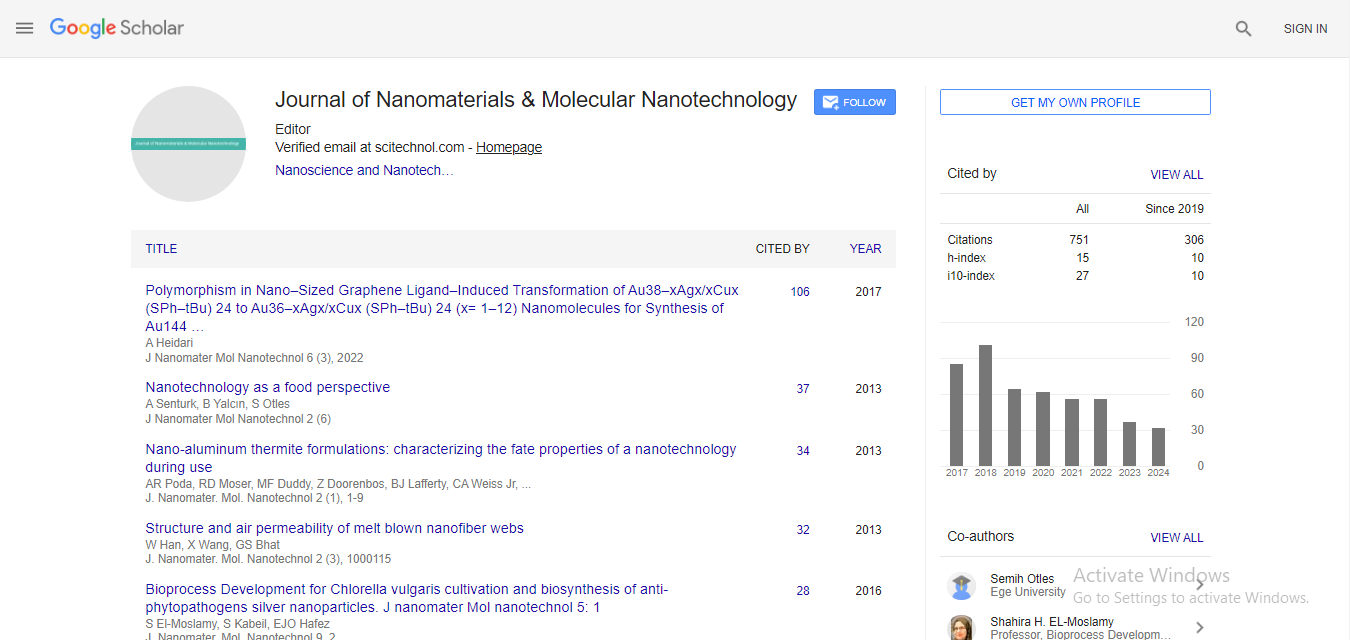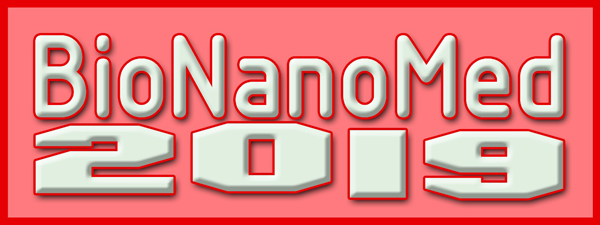Editorial, J Nanomater Mol Nanotechnol Vol: 1 Issue: 1
Molecule for Electronics: A Myriad of Opportunities Comes with Daunting Challenges
| Ranjit Pati* | |
| Department of Physics, Michigan Technological University, USA | |
| Corresponding author : Ranjit Pati Associate Professor, Department of Physics, Michigan Technological University, 1400 Townsend Drive, Houghton, MI 49931, USA E-mail: patir@mtu.edu |
|
| Received: August 20, 2012 Accepted: August 20, 2012 Published: August 22, 2012 | |
| Citation: Pati R (2012) Molecule for Electronics: A Myriad of Opportunities Comes with Daunting Challenges. J Nanomater Mol Nanotechnol 1:1 doi:10.4172/2324-8777.1000e104 |
Abstract
Molecule for Electronics: A Myriad of Opportunities Comes with Daunting Challenges
Since the invention of Integrated Circuit (IC) in 1958, we have seen an unprecedented growth in Si-based electronics industry; ICs are currently used in almost all electronic gadgets. However, it is now very much clear that this era of growth we have been witnessing for the last five decades will soon hit the brick wall, once the transistor size reaches the physical limit of miniaturization.
| Since the invention of Integrated Circuit (IC) in 1958, we have seen an unprecedented growth in Si-based electronics industry; ICs are currently used in almost all electronic gadgets. However, it is now very much clear that this era of growth we have been witnessing for the last five decades will soon hit the brick wall, once the transistor size reaches the physical limit of miniaturization. | |
| Considering the persistent demand for smaller, faster and smarter electronic gadgets in recent years, the time is ripe to think about these questions: Can we sustain the exponential growth that we have seen so far for Si-based electronics? Or what is the possible alternative that goes beyond Si-based electronics? Researchers have been relentlessly working for years to answer these questions. Among many possible options, molecule, the ubiquitous building block of living being, has shown some exciting promise as alternative materials for electronics. The idea of building functional electronic devices from molecules, which originated from the pioneering work of Aviram and Ratner [1], is no longer a myth. The advancement in experimental techniques for manipulating atoms and molecules has kindled our hope on the success of molecular electronics; scientists have been able to build devices by attaching successfully single or at best a few molecules between electrodes [2,3] to demonstrate conduction, rectification, and switching of current in the circuit. | |
| However, the true potential of this field is yet to be realized. The often difficulty in reproducing experimental measurement due to inability in achieving robust atomic level control at the metalmolecule junction and the focus on near term successes discourage researchers to work on this emerging field. Furthermore, even if at the device level researchers are successful, the most important challenges remain on how to integrate these molecular devices in an integrated circuit; conventional architecture used in the current IC may not be useful in this scenario. | |
| One possible way to address these challenges would be to learn from biological processes, where evolutionary molecular circuits hold the key to processing of information. For example, if we look at the cellular processes in our brain, we find that the continuously evolving neural-network is responsible for massive parallel processing of information. Using this clue, Bandyopadhyay et al. [4] have recently demonstrated a 2D ��?molecular cellular automata (CA)�, where each molecular cell (or switch) talks to many others cells at a time and reconfigure their connections (Figure 1) to perform a variety of complex computational task. Instead of wiring CA cells one-byone, they built their CA from the self-assembly of organic molecular switches. Unlike the conventional binary switch, the DDQ molecular switch used by Bandyopadhyay et al. reversibly switches among four conducting states. A scanning tunneling microscope was used to write the input task (read the output) on (from) the assembly. Once the input problem was encoded on the 2-D surface in the form of a pattern of logic states, the pattern evolved following CA rules to give the output. Most important, they showed that the connections between CA cells reconfigure automatically, akin to ��?neural-network� in the brain, for each new input task to activate a new set of CA rules for generating the output. This bio-inspired parallel computing approach is definitely a promising step forward and brings a new hope toward the usage of molecules in electronics. | |
| Figure 1: A schematic of parallel processing of information on 2-D molecular switch assembly. | |
| However, more concerted efforts by scientists and engineers, and extra ordinary innovations are required to bring this conceptual advancement in molecular electronics into practical technology. | |
References |
|
|
|
 Spanish
Spanish  Chinese
Chinese  Russian
Russian  German
German  French
French  Japanese
Japanese  Portuguese
Portuguese  Hindi
Hindi 



